Sierra Nevada Regional Profile
HEALTHY & RESILIENT FORESTS
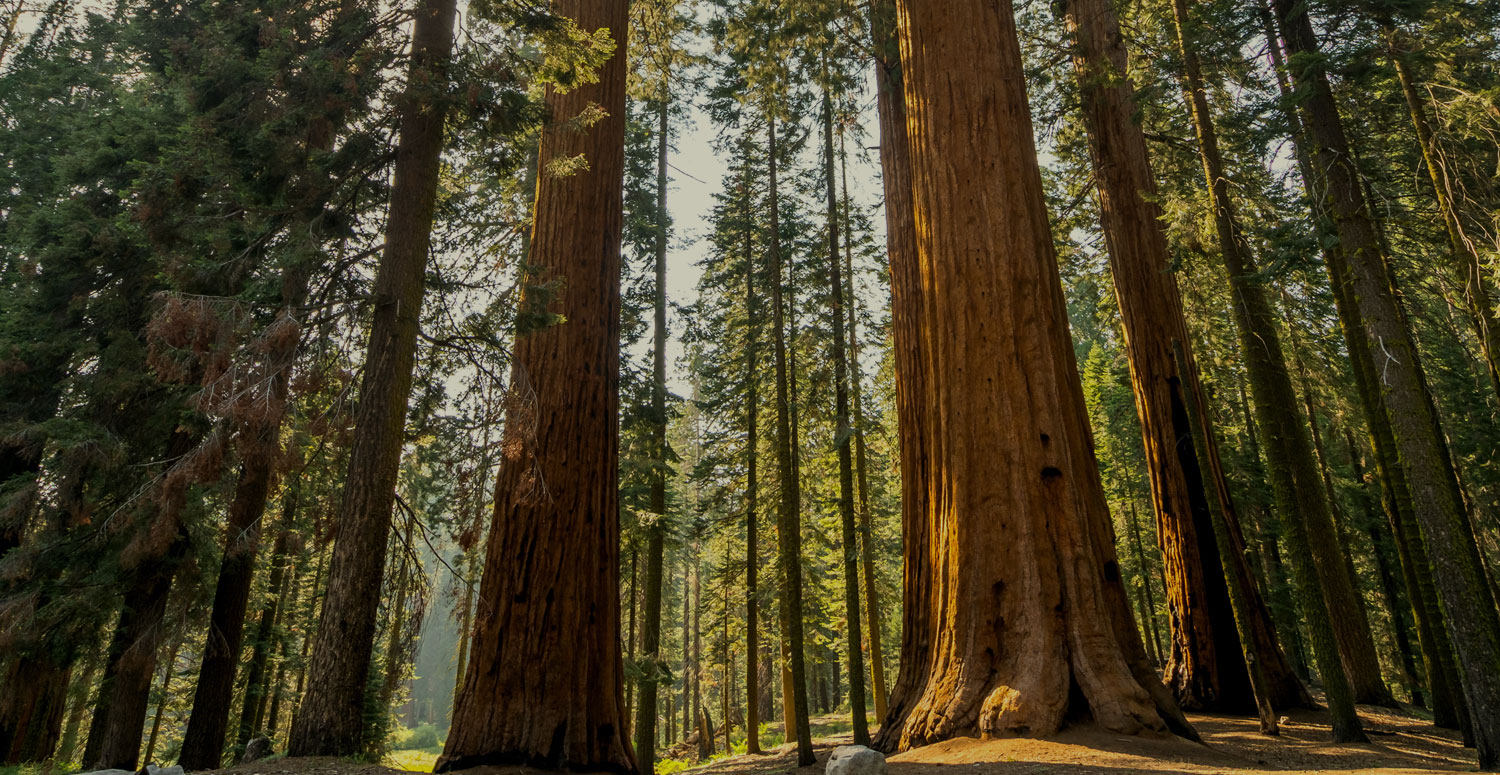
Overview
Healthy forest conditions in the Sierra result when the trees on the landscape are different sizes and spacings between trees are different, which is referred to as forest heterogeneity by scientists. This results in a more open or park-like appearance, with fewer but larger trees scattered across the landscape. Historically, fairly frequent fire maintained this appearance in low to mid-elevation forests. However, the 20th century fire suppression policy disrupted the natural and cultural fire regime, resulting in denser forests and the build-up of surface fuels. Many of the region’s low to mid-elevation forests are currently 5-6 times more dense than historic conditions. Denser forests with high fuel loads are more prone to catastrophic fire and the effects of climate change.
Overcrowded forests lead to increased competition for water, which can be especially stressful for trees during drought. Stressed trees are more susceptible to bark beetle attacks and resulting mortality. Trees that die from drought and or bark beetles become additional fuel and may contribute to wildfires burning hotter and longer.
Strategic vegetation management, such as application of prescribed fire and selective thinning of trees, can encourage healthier forests with fewer and more widely spaced trees, which reduces water stress to remaining trees and fuel build-up that can drive larger and more severe wildfires.
Stakeholder Perspectives
Survey respondents were asked how important different potential areas of investment are for achieving healthy and resilient forests. Reducing fuel loads and reducing tree density received the most “extremely important” responses.
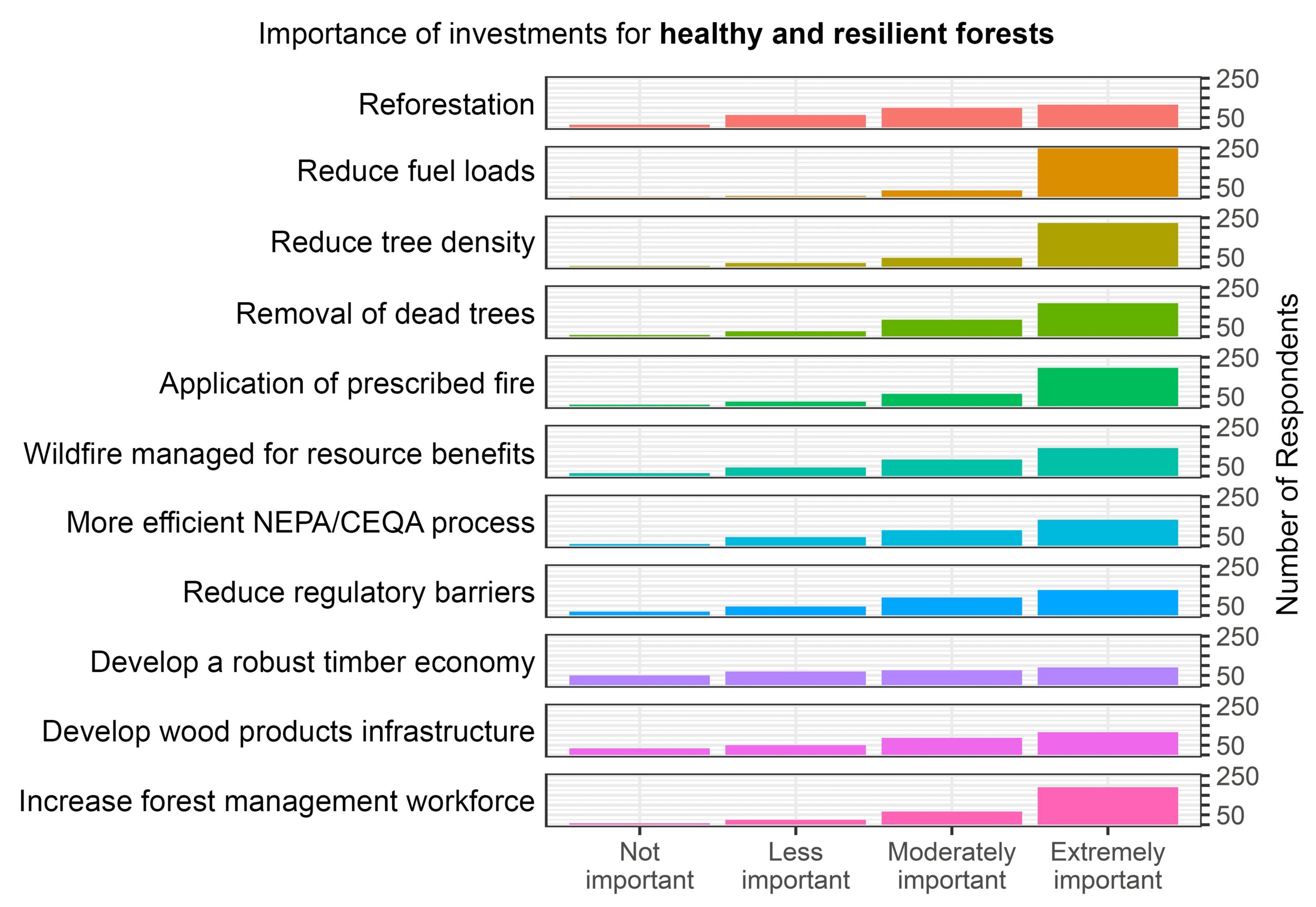
Interviewees emphasized the importance of recognizing the role of drought, climate change, and the legacy of fire exclusion, in our current wildfire crisis. Forest treatments to reduce tree density and fuel loads are critical to restore a more natural disturbance regime.
Resource Conditions
Healthy and resilient forests can be assessed using measurements of various forest structural characteristics.
Seral Stage Distribution
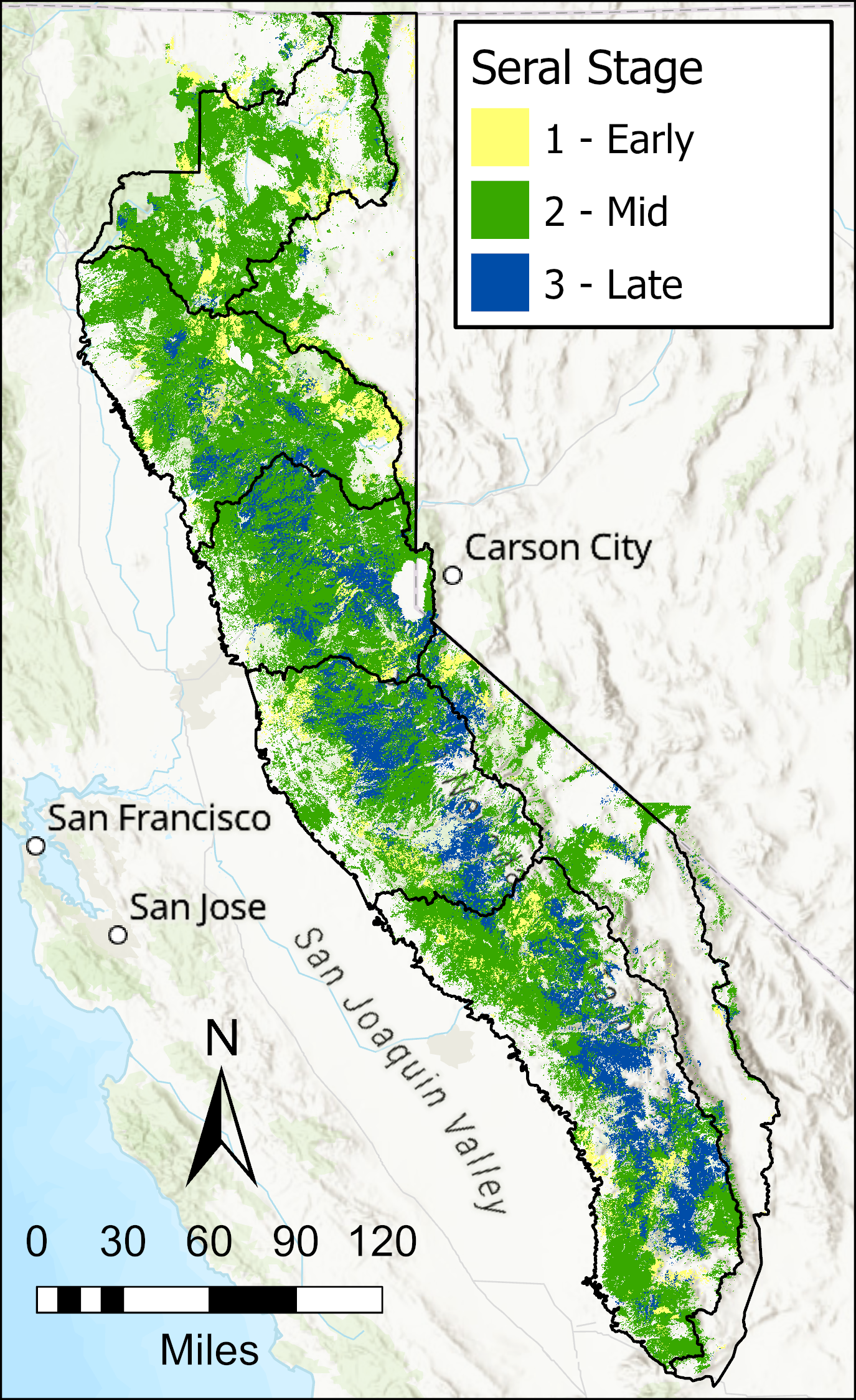
A “sere” is a group of similarly aged trees co-occurring on the landscape. So, the seral stage distribution refers to the arrangement of these different aged tree stands of trees across the landscape.
The patterning of different seral stages is important because those patterns can impact how wildfire is carried and is expected to behave in a forest. In the Sierra Nevada region, nearly 20% of the landscape is in late seral stage, and approximately 9% is in early seral stage. Late seral stage forests are mature with relatively large trees that are important for carbon storage and other ecosystem services.
Maximum Stand Density Index
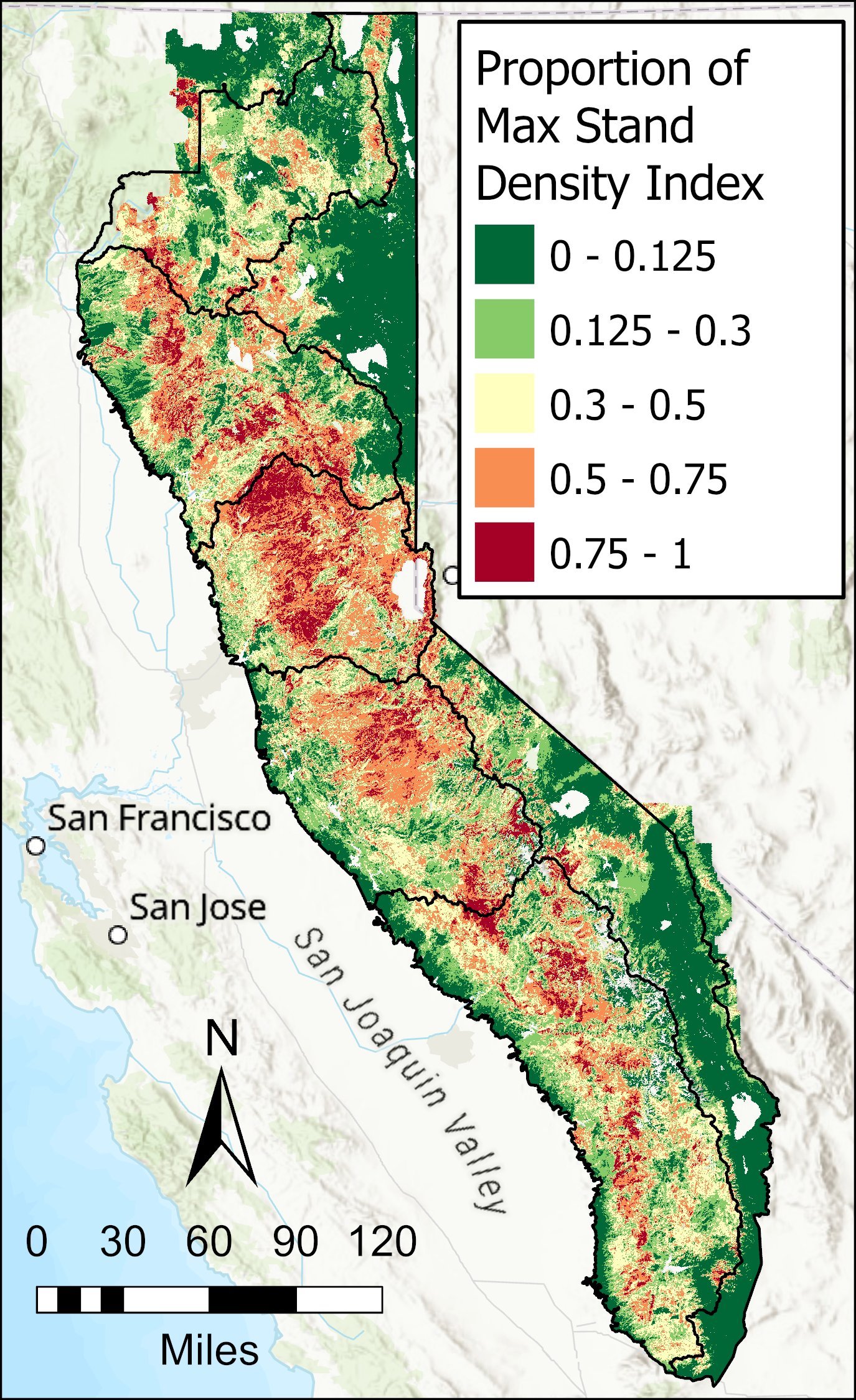
SDI is the upper limit to the occupancy of a tree stand, at which point growth of the stand is only possible after the death of some individuals. SDI is a measure of the number of trees per unit area relative to the size class distribution of the stand. SDI values are important because it helps assess the degree of resilience of a forest which is often a critical objective of forest management.
Probability of High Severity Fire
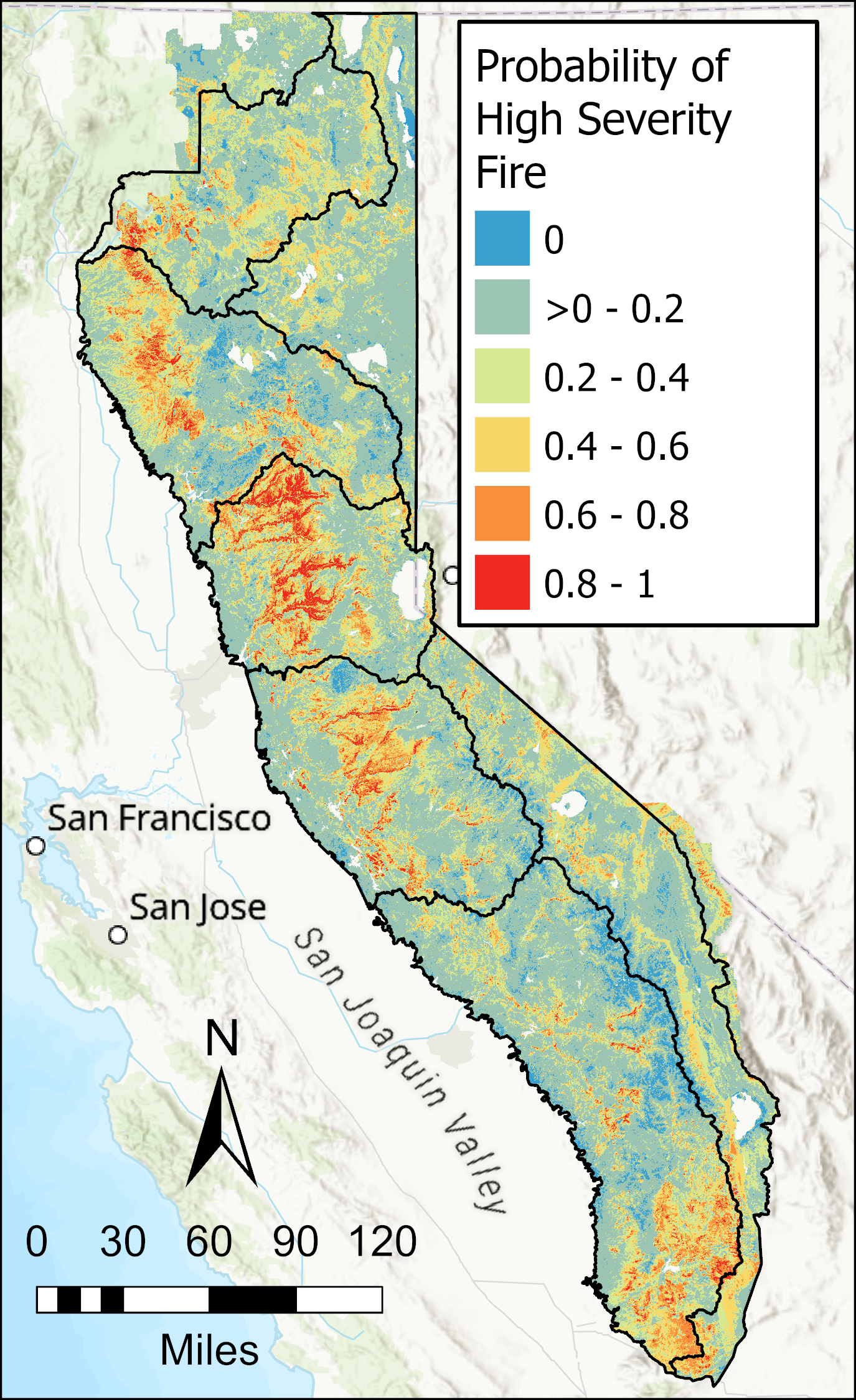
This is the likelihood of a fire with flame lengths exceeding 8-feet occurring on the landscape. It is important because management often seeks to reduce the extent and continuity of high-severity fires, which typically cause the most ecosystem damage and risk to life and property.
